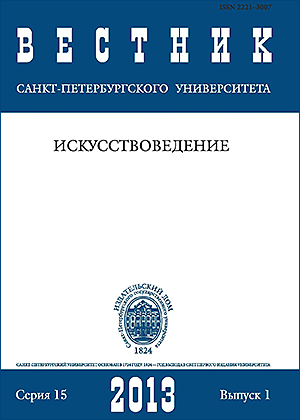The “translation” of style of the paintings: from copy to deconstruction
Abstract
This article focuses on the phenomenon of the copy of a painting in historical perspective. Originally copying was considered as craft. The artist made an attempt to accurately reproduce the original, sometimes for training purposes. In the latter case, the most important copyist’s task was to assimilate figurative language of the original and recreate the style. However, since the middle of the XIX century the copy turns into a dialogue with the original leading to translation of subject sense of the original into a modern language. Sometimes figural (often spiritual) sense of a work is exposed to transformation: in this case it is possible to speak about a variation on the subject of the original and its interpretation. In the XX century in the context of changing an attitude to reality the dialogue, contact are replaced by alienation and rupture of communications. In such context the copy appears as a paraphrase, a parody, deconstruction, complete elimination of the original meaning.
Keywords:
copy, original, translation, deconstruction, art style, subject and composite aspects of the picture
Downloads
References
References
Downloads
Published
How to Cite
Issue
Section
License
Articles of "Vestnik of Saint Petersburg University. Arts" are open access distributed under the terms of the License Agreement with Saint Petersburg State University, which permits to the authors unrestricted distribution and self-archiving free of charge.






